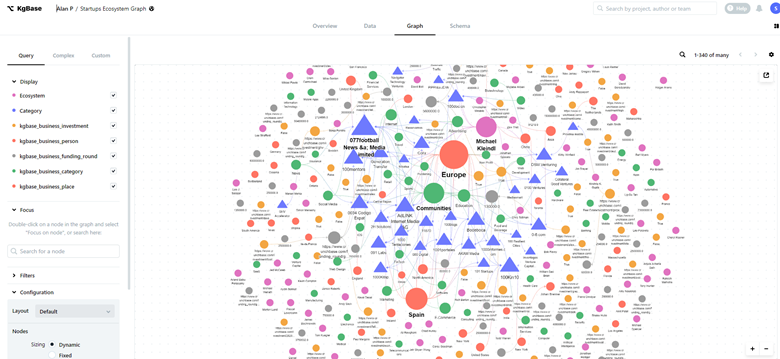No-Code Open Platform Database Creation: Empowering Companies to Build Faster
No-Code Open Platform Database Creation: Empowering Companies to Build Faster
Blog Article
A Comprehensive Guide to Executing Scalable Databases Without the Requirement for Coding Know-how
In the contemporary landscape of data management, the ability to implement scalable databases without coding know-how is becoming progressively necessary for companies of all dimensions. This overview aims to light up the process, focusing on easy to use devices and user-friendly interfaces that demystify database configuration. By analyzing key features, effective strategies for execution, and best techniques for ongoing monitoring, we will resolve just how also non-technical users can with confidence browse this complicated terrain. What are the important aspects that can really empower these customers to utilize scalable databases effectively? The answers might redefine your strategy to information management.
Comprehending Scalable Databases
In the world of contemporary data monitoring, scalable databases have actually emerged as an essential solution for companies seeking to take care of enhancing quantities of information successfully. These databases are created to suit development by enabling the seamless addition of sources, whether through horizontal scaling (including much more makers) or vertical scaling (upgrading existing equipments) This flexibility is crucial in today's fast-paced electronic landscape, where information is generated at an extraordinary rate.
Scalable databases typically utilize dispersed styles, which allow information to be spread out across several nodes. This circulation not just boosts performance yet also offers redundancy, making certain information availability even in the occasion of hardware failures. Scalability can be a critical element for different applications, consisting of e-commerce platforms, social networks networks, and large information analytics, where user demand can vary dramatically.
Furthermore, scalable databases frequently include robust data consistency models that balance performance and reliability. Organizations should consider their specific demands, such as read and compose rates, data stability, and mistake tolerance when choosing a scalable data source remedy. Ultimately, understanding the underlying principles of scalable data sources is essential for companies aiming to flourish in a progressively data-driven world.
Key Features to Look For
When evaluating scalable databases, several key attributes are extremely important to making certain optimum efficiency and dependability. Most importantly, think about the architecture of the database. A dispersed style can boost scalability by permitting data to be stored throughout several nodes, assisting in seamless data access and processing as demand rises.
An additional essential function is data dividing, which allows efficient monitoring of big datasets by dividing them right into smaller, extra workable pieces (no-code). This strategy not just improves efficiency but additionally simplifies source allowance
Additionally, try to find robust duplication capabilities. This feature ensures data redundancy and high schedule, lessening downtime during upkeep or unexpected failings.
Efficiency tracking devices are also essential, as they supply real-time insights into system wellness and operational effectiveness, enabling prompt changes to maintain ideal performance.

User-Friendly Data Source Equipment
Simplicity is an essential component in the design of straightforward data source tools, as it enhances access for individuals with varying degrees of technical know-how. no-code. These devices prioritize instinctive user interfaces, enabling customers to create, take care of, and query data sources without needing comprehensive shows understanding
Trick functions typically consist of drag-and-drop functionality, aesthetic data modeling, and pre-built themes that improve the arrangement process. Such devices often use guided tutorials or onboarding procedures that assist in user involvement and reduce the discovering curve. Furthermore, smooth combination with popular data sources and solutions ensures that individuals can conveniently import and export information, even more streamlining operations.

Moreover, durable support and community resources, such as discussion forums and documents, boost the customer experience by supplying support when required. Generally, user-friendly data source devices empower companies to harness the power of scalable databases, making data administration available to everyone included.
Step-by-Step Implementation Overview
How can companies successfully apply scalable data sources to meet their growing information needs? The procedure begins with determining specific information requirements, including the quantity, variety, and speed of data that will be refined. Next, companies should examine user-friendly data source devices that provide scalability attributes, such as cloud-based solutions or handled data source solutions.
When the ideal tool is picked, the following action includes configuring the data source environment. This consists of setting up instances, specifying customer consents, and establishing data frameworks that align with company goals. Organizations needs to then migrate existing redirected here data into the new system, making sure information honesty and minimal interruption to procedures.
Post-migration, performing complete screening is important; this includes performance testing under different tons problems to make certain the system can take care of future growth - no-code. Additionally, it is very important to educate personnel on the data source administration user interface to assist in smooth use
Ideal Practices for Monitoring
Effective administration of scalable databases calls for a tactical technique that prioritizes recurring surveillance and optimization. To attain this, companies must carry out durable tracking tools that provide real-time insights into data source efficiency metrics, such as inquiry action times, resource utilization, and transaction throughput. Frequently evaluating these metrics can aid recognize traffic jams and locations for improvement.

Normal backups and disaster healing strategies are essential to guard data stability and accessibility. Developing a regular for examining these back-ups will certainly ensure a reputable recuperation process in case of an unforeseen failing.
Furthermore, efficiency adjusting ought to be a continuous procedure. Changing indexing strategies, enhancing queries, and scaling resourcesâEUR" whether vertically or horizontallyâEUR" will certainly help preserve optimal performance as use needs develop.
Last but not least, fostering a culture of expertise sharing among group participants will allow continuous learning and adaptation, ensuring that the administration of scalable data sources continues to be effective and efficient with time.
Final Thought
Finally, the implementation of scalable data sources can be properly achieved without coding proficiency with the application of instinctive interfaces and user-friendly tools. By adhering to the detailed approaches for arrangement, data migration, and performance testing, people can browse the intricacies of data source management easily. Emphasizing finest techniques for recurring upkeep and cooperation more boosts the capacity to take care of scalable data sources successfully in a swiftly evolving data-driven atmosphere.
In the contemporary landscape of data management, the ability to implement scalable databases without coding knowledge is ending up being progressively necessary for companies of all dimensions.In the world of modern-day information administration, scalable databases have emerged as an essential service for organizations seeking to take care of raising quantities of info efficiently.Furthermore, scalable data sources commonly include durable data useful source uniformity designs that balance efficiency and integrity.Exactly how can organizations properly apply scalable databases to fulfill their growing data needs? Next off, companies should review easy to use database devices that use scalability attributes, such as cloud-based services or managed data Find Out More source services.
Report this page